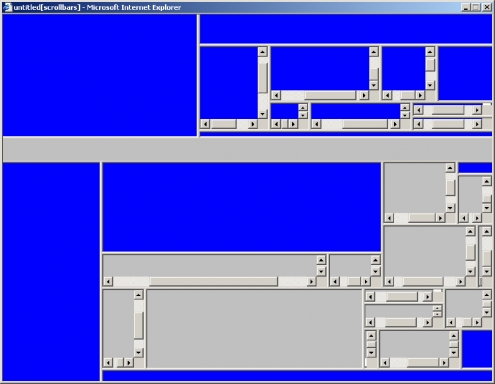Electronic Superhighway (2016-1966) at MAAT, Lisbon

Electronic Superhighway (2016-1966) at MAAT, Lisbon
MAAT brings to Portugal Electronic Superhighway, produced by the Whitechapel Gallery, London, in 2016: a landmark exhibition that brings together over 100 artworks to show the impact of computer and Internet technologies on artists from the mid-1960s to the present day and includes work by Constant Dullaart, JODI, Jan Robert Leegte, and many more. The exhibition at MAAT runs from 8 November 2017 until 19 March 2018.
The exhibition features new and rarely seen multimedia works, together with film, painting, sculpture, photography and drawing by over 70 artists, including works by Cory Arcangel, Roy Ascott, Jeremy Bailey, Judith Barry, James Bridle, Douglas Coupland, Camille Henrot, Lynn Hershman Leeson, Vera Molnar, Katja Novitskova, Albert Oehlen, Trevor Paglen, Nam June Paik, Jon Rafman, Evan Roth, Lilian F. Schwartz, Hito Steyerl, Ryan Trecartin, Amalia Ulman and Ulla Wiggen.
The exhibition title Electronic Superhighway (2016-1966) is taken from a term coined in 1974 by South Korean video art pioneer Nam June Paik, who foresaw the potential of global connections through technology. Arranged in reverse chronological order, Electronic Superhighway (2016-1966) begins with works made between 2000 – 2016, and ends with Experiments in Art and Technology (E.A.T), an iconic, artistic moment that took place in 1966. Spanning 50 years, from 2016 to 1966, key moments in the history of art and the Internet emerge as the exhibition travels back in time.
As the exhibition illustrates, the Internet has provided material for different generations of artists. Oliver Laric’s painting series Versions (Missile Variations) (2010) reflects on issues surrounding digital image manipulation, production, authenticity and circulation. Further highlights include a series of photographs from conceptual artist Amalia Ulman’s four-month Instagram project Excellences & Perfections (2014-15), which examines the influence of social media on attitudes towards the female body. Miniature works by Celia Hempton painted live in chatrooms go on display alongside a large scale digital painting by Albert Oehlen and manipulated camera-less photography by Thomas Ruff. The dot-com boom, from the late 1990s to early millennium, is also examined through work from international artists and collectives.
Works by Nam June Paik in the exhibition include Internet Dream (1994), a video-wall of 52 monitors displaying electronically-processed images, and Good Morning, Mr. Orwell (1984). On New Year’s Day 1984 Paik broadcast live and pre-recorded material from artists including John Cage and The Thompson Twins from a series of satellite-linked television studios in New York, West Germany, South Korea and Paris’ Pompidou Centre to an estimated audience of 25 million viewers worldwide. Paik saw the event as a counter response to George Orwell’s dystopian vision of 1984.
The birth of the World Wide Web in 1989 provided a breeding ground for early user-based net art, with innovators such as Moscow-born Olia Lialina adopting the Internet as a medium, following earlier practices in performance and video. In My Boyfriend Came Back from the War (1996) the artist presents a love story enacted via an interactive black and white browser screen.
The emergence of net art is explored through a curated selection of interactive browser-based works from the Rhizome archive, a leading digital arts organisation founded online in 1996 by artist Mark Tribe, and affiliated with the New Museum in New York since 2003. In 1999, Rhizome created a collection of born-digital artworks which has grown to include over 2000 and in recent years, it has developed a preservation programme around this archive.
One of the first ever major interactive art installations, Lorna (1979-1982) by Lynn Hershman Leeson presents a fictional female character who stays indoors all day watching TV and anticipated virtual avatars. A proliferation of experiments from the 1960s – 70s pushed the boundaries of technology. Artists such as Manfred Mohr, Vera Molnar, Frieder Nake and Stan VanDerBeek adopted computer programmes to create abstract and geometrical works while Roy Ascott, Allan Kaprow, Gary Hill and Nam June Paik used various new media to connect across multiple sites globally.
The exhibition concludes with artefacts from the formation of Experiments in Art and Technology (E.A.T) in New York in 1966 which saw performances over nine evenings from artists such as Robert Rauschenberg, John Cage and Yvonne Rainer working together with engineers from American engineering company Bell Laboratories in one of the first major collaborations between the industrial technology sector and the arts.
Images:
Jan Robert Leegte, Scrollbar Composition, 2000. HTML, JavaScript website. scrollbarcomposition.com
Constant Dullaart, Jennifer in Paradise (Plastic Wrap_20.15.15), 2014. Lenticular print, 79 x 114 cm.
Publication date: 1 Nov '17
